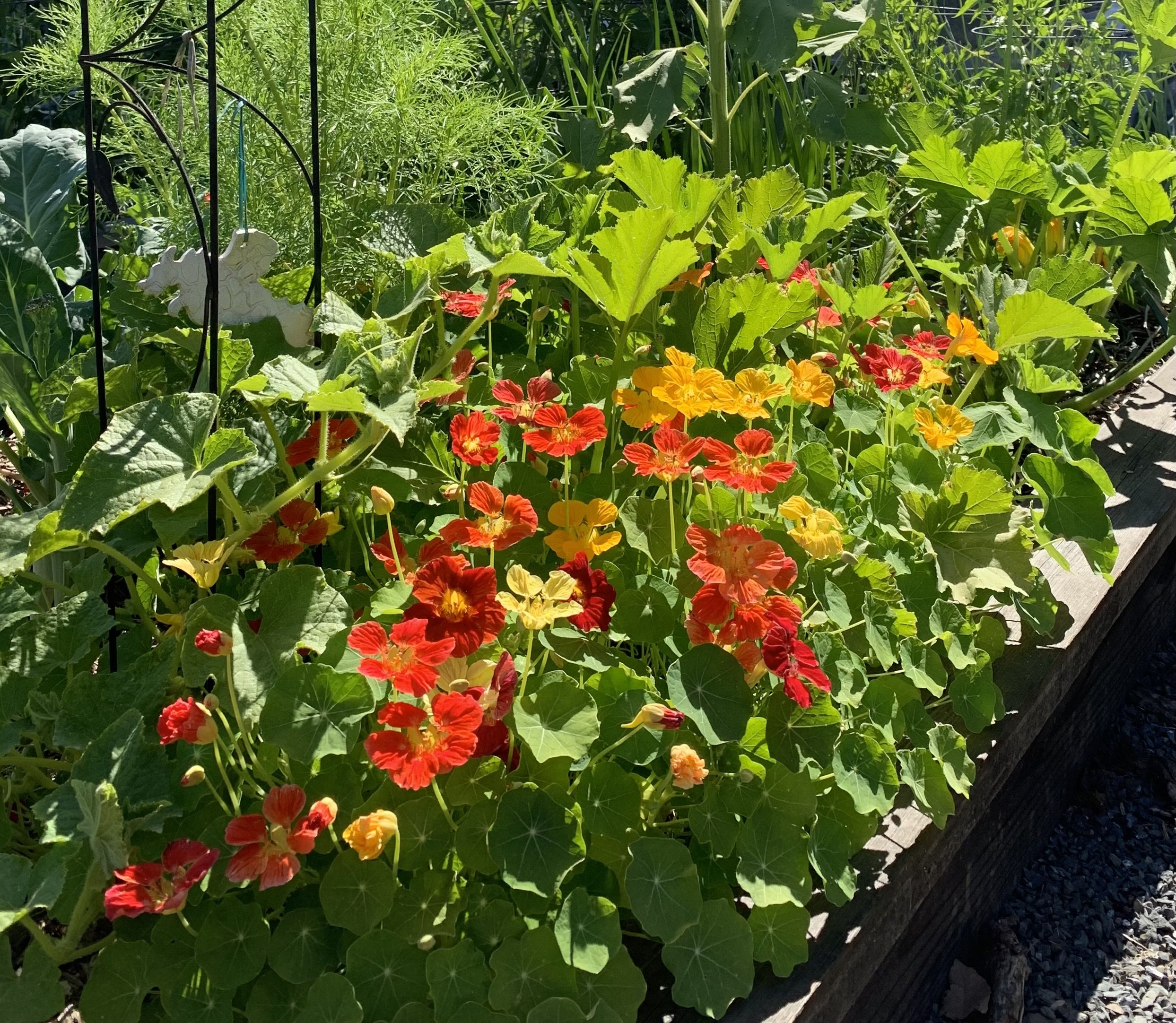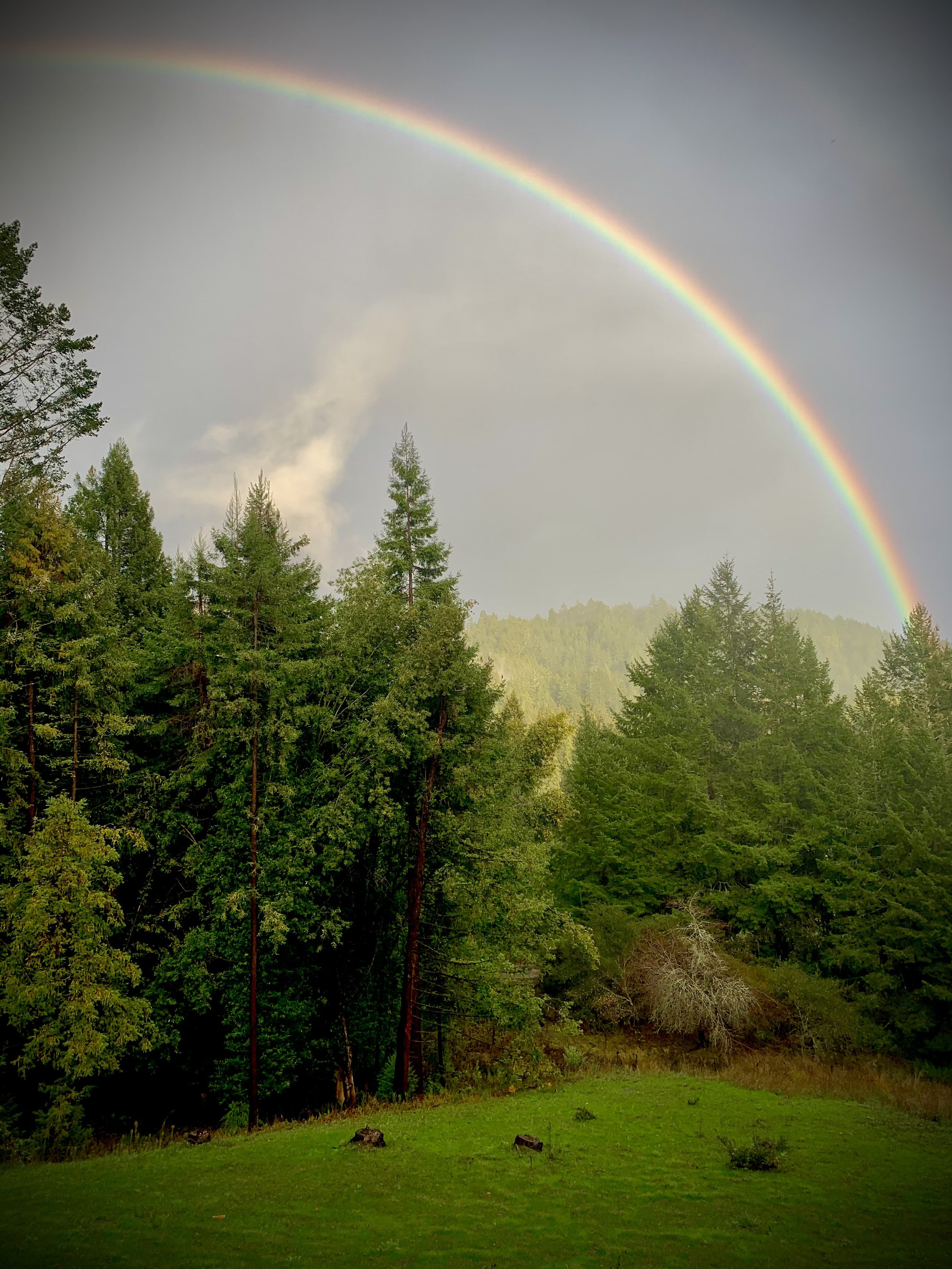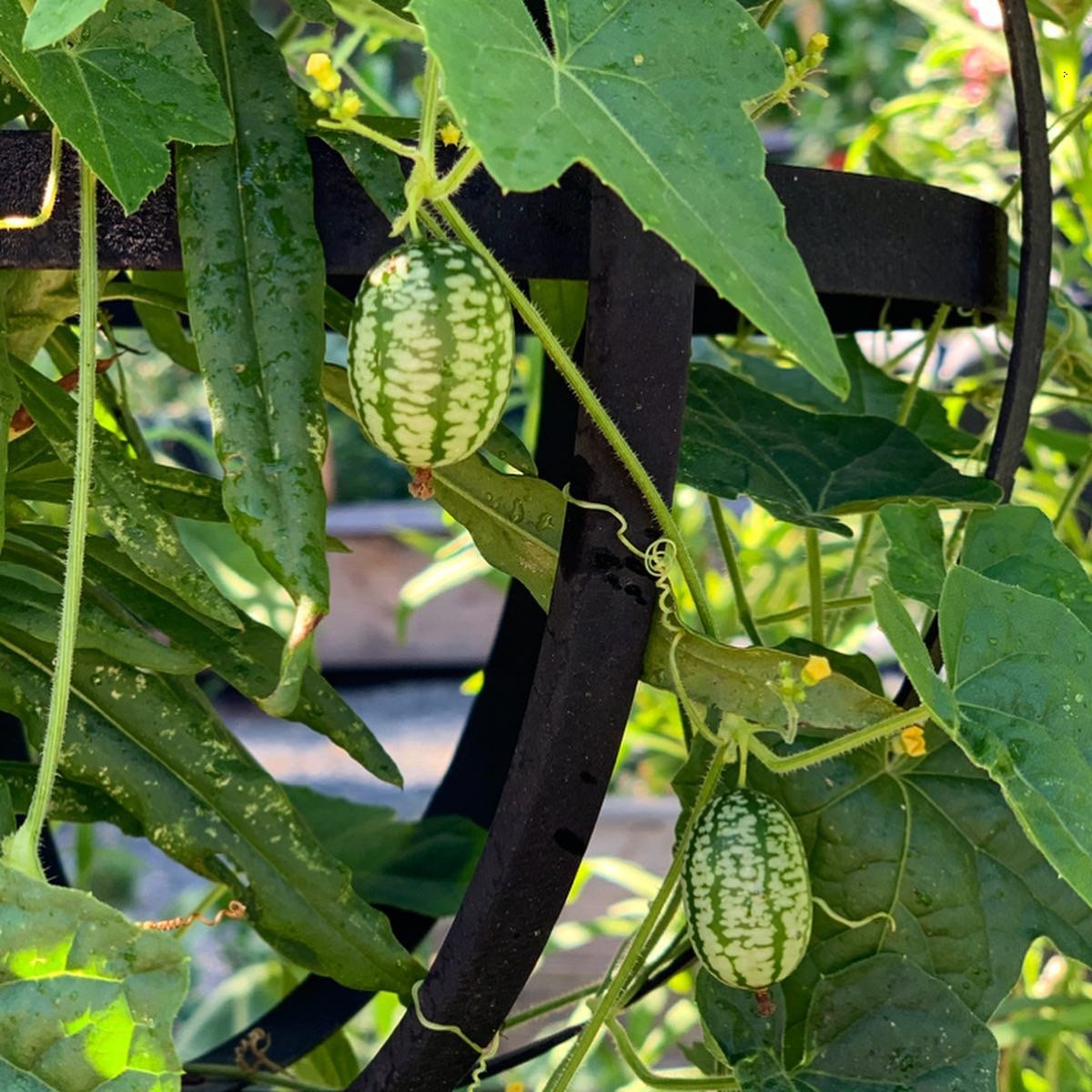July is a magnificent time in the garden. Abundant sunshine and consistent temperatures lead to thriving plants and overflowing harvest baskets. In fact, you'll likely need multiple baskets from here on out to get all of your produce into the kitchen. I love to grow flowers amongst my veggies, and I leave a few mason jars outside to put my bouquets in so they don't get crushed in my basket. There is something satisfying about harvesting everything for a salad and a colorful bouquet for the table.
The to-do list is short this month, with the garden mainly requiring maintenance and keeping an eye out for pests and plants that might need extra nutrients. They are working so hard on production, and it's a good idea to scratch in organic fertilizer or top dress with compost. Warmer weather also significantly boosts the aphid population amongst brassicas, aka kale, broccoli, cabbage, and cauliflower plants. For a true invasion, which seems to hit my garden without fail about this time every year, my best remedy is dusting them with food-grade diatomaceous earth (DE). If you're just having a relatively minor insect problem, insecticidal soap or even dawn dish soap mixed with water can be quite effective in getting on top of the situation before it turns into an insect rave.
I find myself excited to be amid so much fresh produce, and while I'm enjoying the literal fruits of my labor, I'm also taking time to acknowledge the vital role my garden plays in my life and that of my family. There is true magic happening out there every single second of every single day. To some, that might sound cheesy, but to me, it's realizing we are a part of nature, and it never hurts to pause and be thankful for its consistency and constancy in our lives. Not only does the garden provide fresh food, but it also directly affects our mood and well-being. When was the last time you heard advice saying, if you're stressed and feeling disconnected, take time out of your busy day to hole up in a dark closet 20 stories up in a skyscraper; the effects will be transformational!!
Instead, it's always to take the time and get out in nature. Go for a walk on your lunch break, brighten your desk with fresh flowers, visit a local park, and take in the sights and sounds. Well, West County might be the most glorious place to heed that advice. Yes, July does become incredibly busy with tourists, and I get annoyed here and there with slow drivers, lots of traffic, etc. But there is a reason everyone wants to invade our towns. We truly have it all: hiking amongst the redwoods, recreation on the Russian River, a gorgeous coastline, excellent weather, and so much more. I'm going to make an effort to slow down (I promise not on River Road) and soak up the beauty surrounding me. After all, we are truly living in paradise. Happy Gardening!























